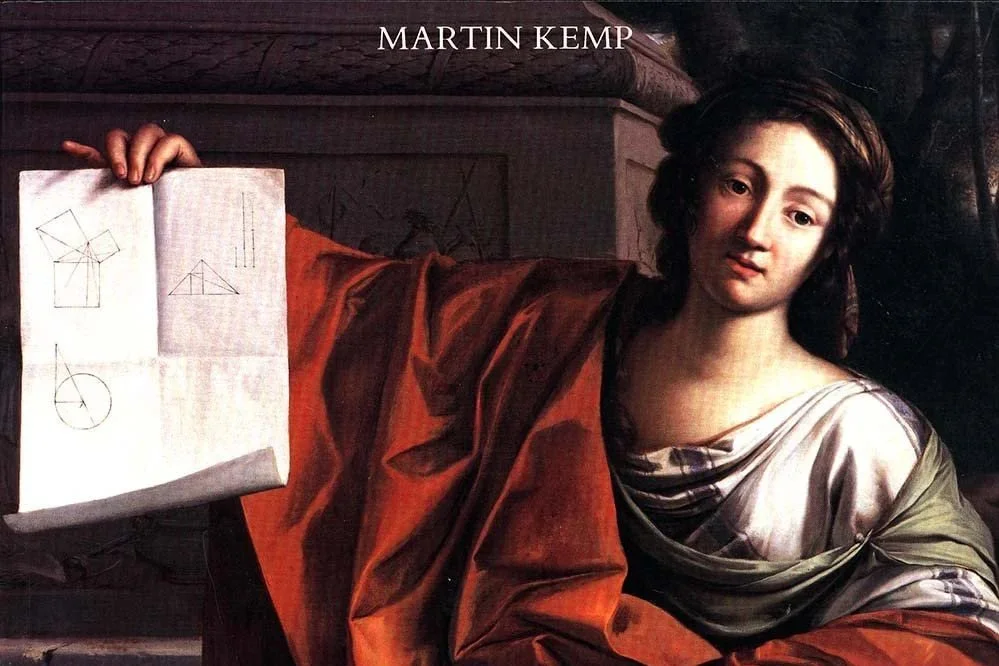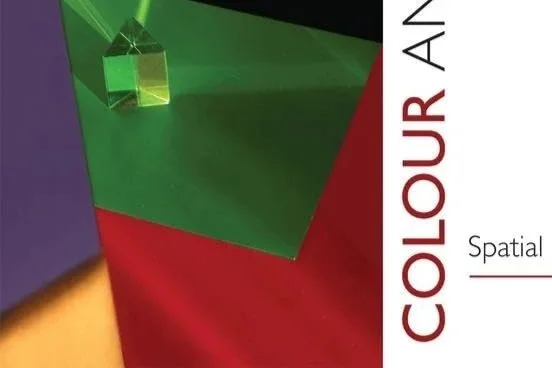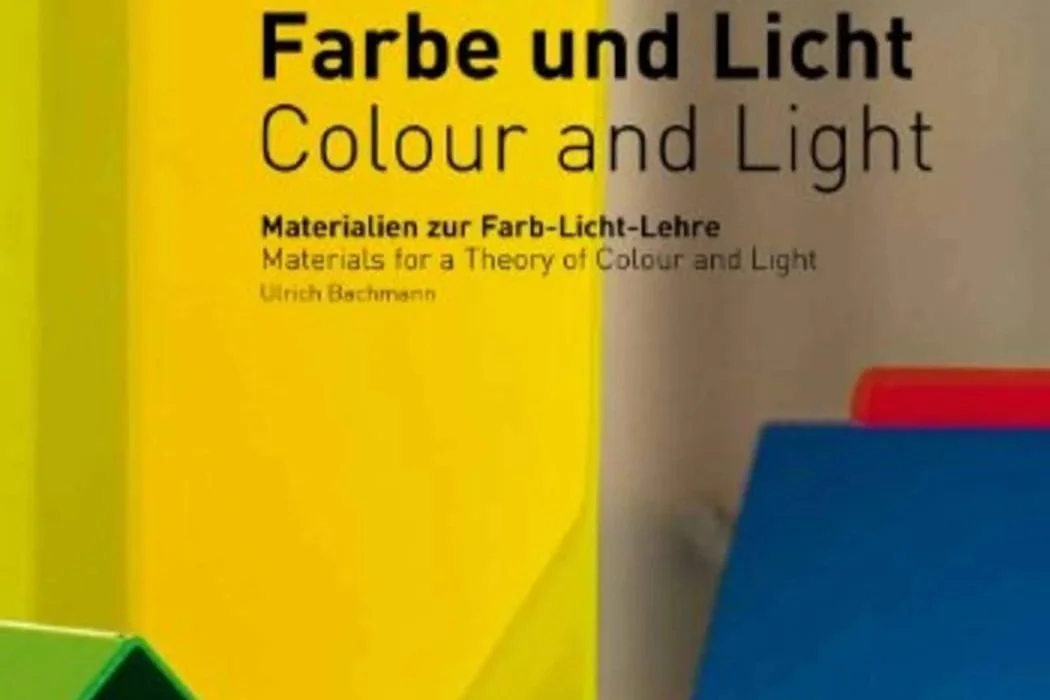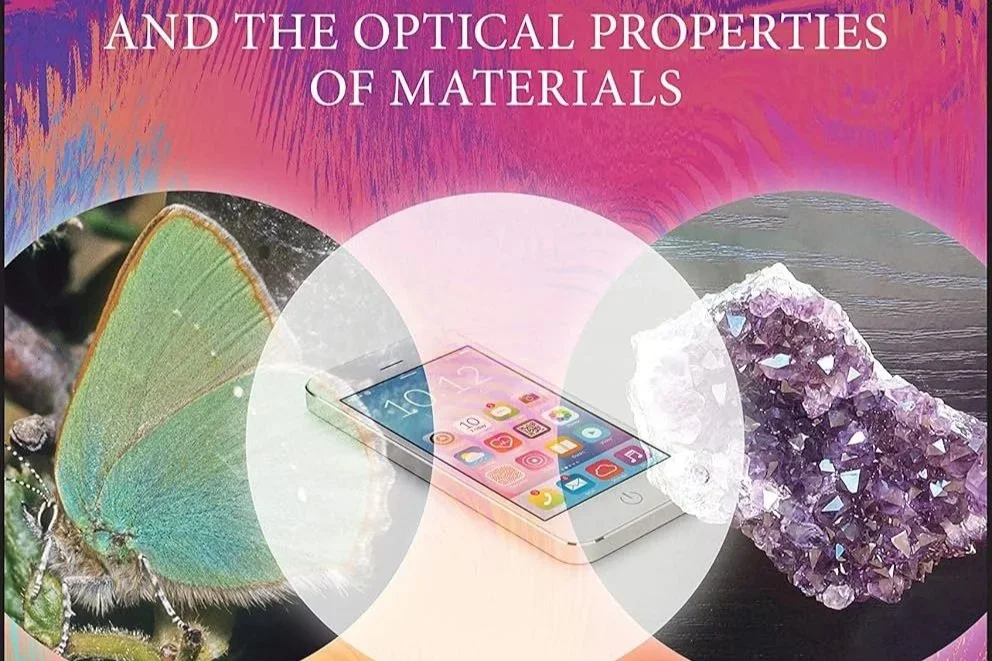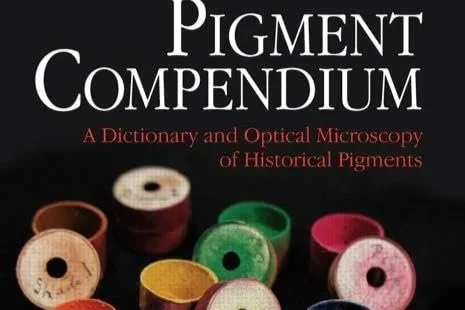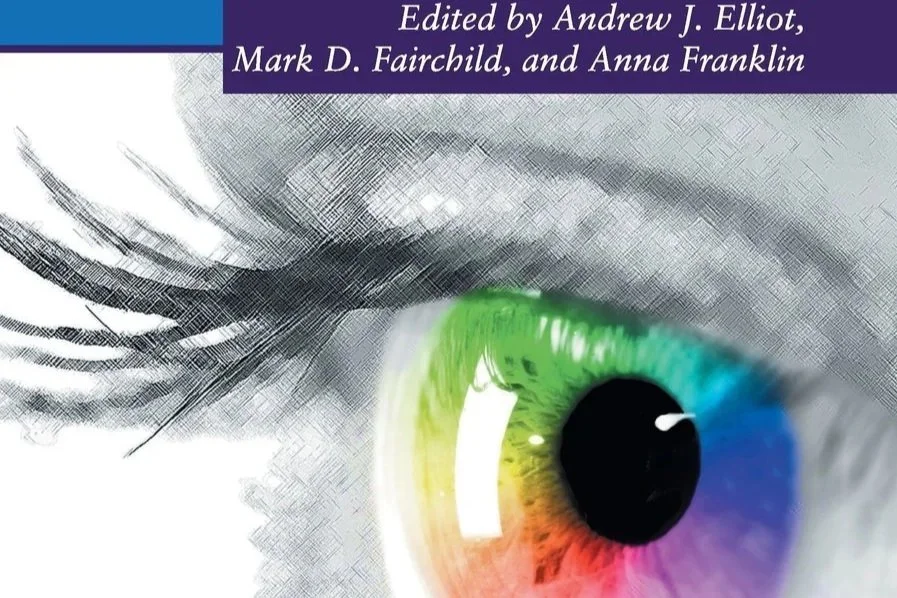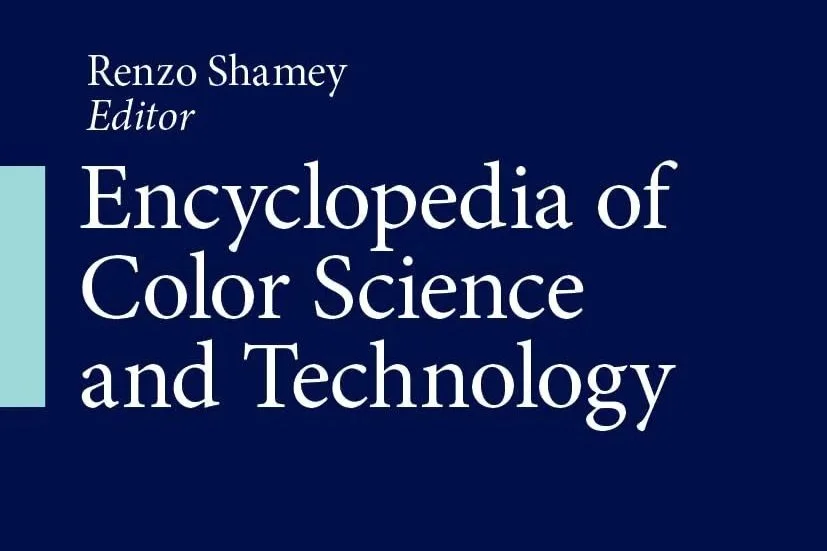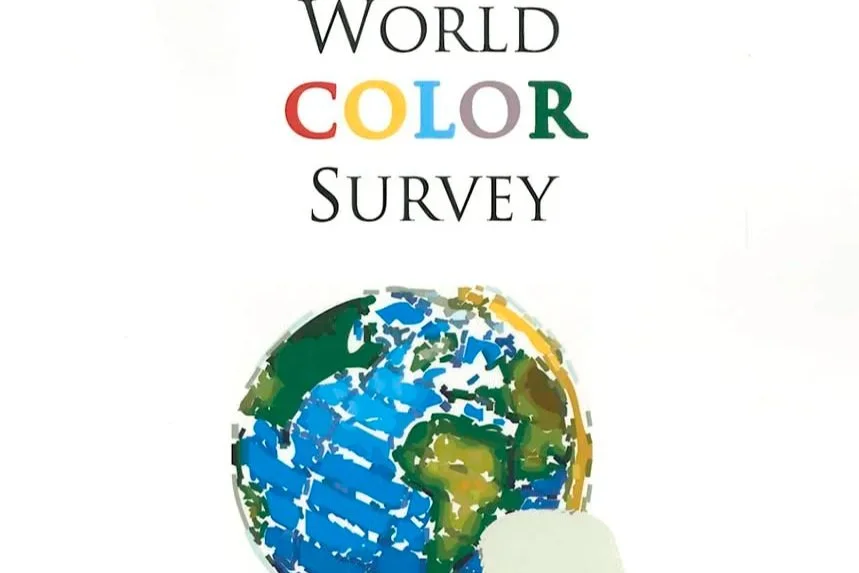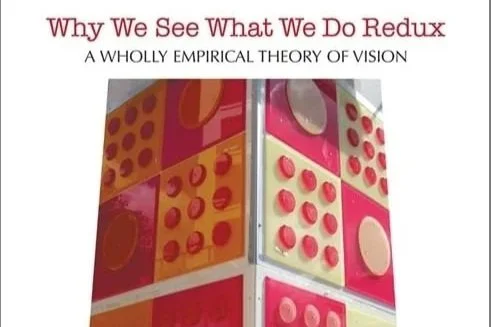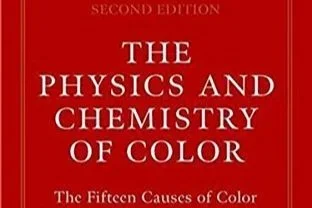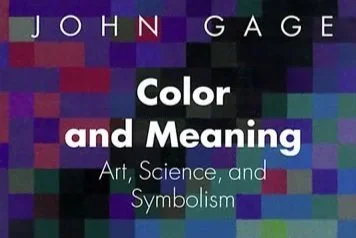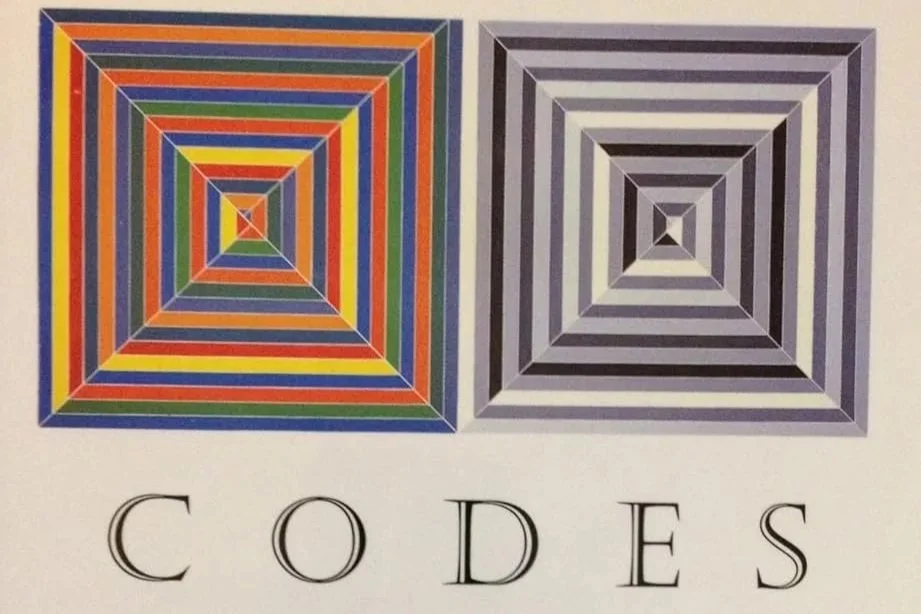Deep Dive
Expand and intensify your knowledge of colour with these books which are (reasonably) free of the common misconceptions about colour
History & Culture
Simonini, G. 2025. Color Charts in 18th century Europe - Natural, Pigmentary, and Trichromatic Published in: Heidelberg: arthistoricum.net.
-
In her PhD thesis, Simonini presents a large number of published and unpublished colour sample charts from the 18th century, many of which were previously little or not very well known. They are assigned to the fields of natural science, art and colour theory and their origins and connections are well researched. This is an informative piece of cultural history that also invites study thanks to the illustrations.
Gage, J. 2024. Colour and Culture: Practice and Meaning from Antiquity to Abstraction. UK: Thames & Hudson
-
An incredible wealth of information and references of colour in art. Gage (an art historian) explains it in the introduction: “Colour is almost everybody’s business but it has rarely been treated in a unified way: thus my book opens and closes with instances of how a failure to look at colour comprehensively has led to absurdities of theory, if not of practice.” An absolute must for any serious colour professional. Originally published in 1999.
Shamey R., Kuehni R.G. 2020. Pioneers of Color Science. Springer.
-
This book provides a comprehensive overview of the historical development of color science, told through the stories of more than 90 of the most prominent figures in the field and their contributions.
The text comprises an extensive set of biographical essays about pioneering scientists in the field of color science, describing their most significant achievements and explaining how their findings influenced the general understanding of color. Grouped by historical period, each part is prefaced with a short introduction that sets the essays into context and helps the reader appreciate the background and the importance of the contributions made.
Kemp, M. 1992. The Science of Art – Optical themes in western art from Brunelleschi to Seurat. New Haven and London: Yale University Press.
-
A thorough and scholarly overview of optical themes, such as perspective and other projections in Western art. The book is in three parts; the third part, ‘The Colour of Light’, is devoted to theories of colour from Aristotle to Neo-Impressionism.
Arts & Design
Artists' Master Series: Color & Light. 2022. 3DTotal Publishing.
-
This comprehensive first volume explores the use of color and light in both digital and traditional media, with theory, tutorials, techniques, and tips written and illustrated by the world’s best known and most talented artists. The section by Charles Pickard on colour and light is the most detailed science-based account of colour and light for representational painters in book form. Recommend alongside the less detailed but still excellent Color and Light by James Gurney and the New Munsell Student Color Set.
Fridell Anter, K and Klarén, U. (Editors). 2017. Colour and Light – Spatial Experience. London & New York: Routledge.
-
This is an updated English language edition of the original Swedish Färg & Ljus för människan – I rummet (2014). The book is based on the interdisciplinary research project SYN-TES: Human colour and light synthesis – towards a coherent field of knowledge and includes contributions from thirteen Swedish and Norwegian researchers and professionals in the fields of colour and light. A must for students and teachers of architecture, interior design and lighting.
Bachmann, U. 2011. Farbe und Licht/Colour and Light: Materialen zur Farb-Licht-Lehr / Materials for a Theory of Colour and Light. Bilingual English and German edition with DVD. Salenstein: Verlag Niggli.
-
The book is the outcome of many years of research and teaching collaboration between experts and institutes of the Zurich University of the Arts (ZHdK) during 2005–11. It presents the results of several teaching projects and experiments on the interaction of space, light and colour carried out at the University, with seemingly unlimited
spatial and technical resources. The aim has been to provide knowledge, ideas and tools for direct application in spatial design – and this the book achieves better than most. There are chapters on colour phenomena such as simultaneous contrast, coloured shadows, the spreading effect and on pigment and light mixtures, LEDs, colour
vision and colour systems - all written by experts. The book includes an interactive CD-ROM with tools for independent learning and experimentation (unfortunately the interactive tools do not run on the most recent operating systems). Nevertheless, this book will be interesting and inspiring for anyone working with colours in spatial contexts.
Porter, T. and Mikellides, B. (eds.) 2009. Colour for Architecture Today. Oxford, UK & New York, NY: Taylor & Francis.
-
A re-edition of a ground-breaking book on colour in architecture. For someone teaching architecture or interior design, this provides a good overview of the role of colour in the built environment, and will open the door to many avenues of investigation. The book is well illustrated. Chapters are short and written by experts from different parts of the world. Chapters are also self-contained and can be read in any order. Porter was a colour consultant and a Visiting Fellow at Oxford Brookes University. Mikellides, a Professor in the School of Architecture at Oxford Brookes University, is an environmental psychologist and researcher.
Materials
Tilley, R.J.D., 2020. Color and the Optical Properties of Materials (3rd ed.). USA: WIley.
-
The revised third edition of Colour and the Optical Properties of Materials focuses on the ways that colour is produced, both in the natural world and in a wide range of applications. The expert author offers an introduction to the science underlying colour and optics and explores many of the most recent applications.
Eastaugh, N., Walsh, V. Chaplin, T. and Siddall, R., 2008. Pigment Compendium. Routledge.
-
This is an essential purchase for all painting conservators and conservation scientists dealing with paintings and painted objects. It provides the first definitive manual dedicated to optical microscopy of historical pigments. Illustrated throughout with full colour images reproduced to the highest possible quality, this book is based on years of painstaking research into the visual and optical properties of pigments. (Expensive)
Perception
Simner, J. and Hubbard, E.M (eds.). 2018. The Oxford Handbook of Synesthesia. UK: Oxford University Press.
-
A broad body of knowledge is brought together into one definitive state-of-the-art handbook. It contains chapters on synesthesia’s origins, neurological basis, links with language and numbers, attention and perception. It describes how synesthesia provides inspiration for artists and designers. The book ends with a series of perspectives on synesthesia, including a first-hand account, and philosophical viewpoints which show how synesthesia poses unique questions about sensation, consciousness and the nature of reality.
Kernell, D. 2016. Colours and Colour Vision: An Introductory Survey. UK: Cambridge University Press.
-
Colours are increasingly important in our daily life, but how did colour vision evolve? How have colours been made, used and talked about in different cultures and tasks? How do various species of animals see colours? Which physical stimuli allow us to see colours and by which physiological mechanisms are they perceived? How and why do people differ in their colour perceptions? In answering these questions and others, this book offers an unusually broad account of the complex phenomenon of colour and colour vision.
Gilchrist A. 2006. Seeing Black and White. UK: Oxford University Press. (Oxford Psychology Series)
-
Comprehensive account of lightness perception and associated phenomena, including a fascinating and detailed historical survey and a comprehensive account of current problems, by a leading expert in the field.
Psychology
Elliot A. J., Fairchild M. D. & Franklin A. (Editors). 2016. Handbook of Color Psychology (Cambridge Handbooks in Psychology) 1st Edition. Cambridge.
-
Outstanding detailed coverage, with chapters by preeminent specialists on subjects ranging from cone cells to colour symbolism and associations.
Colour Measurement & Colour Science
Shamey. R. (ed). 2023. Encyclopedia of Color Science and Technology 2nd ed. Springer.
-
This fully revised and expanded 2nd edition provides a single authoritative resource describing the concepts of color and the application of color science across research and industry. (Very expensive)
Berns, R. 2019. Billmeyer and Saltzman's Principles of Color Technology (4th Edition). New York, NY: John Wiley & Sons.
-
This a completely revised fourth edition of Fred Billmeyer’s and Max Saltzman’s a classic work that originally appeared in 1967. It covers just about every imaginable aspect of colour technology, combining the clarity and ease of use of earlier editions with two decades of advancement in colour theory and technology. Roy Berns, a former student of Billmeyer and Saltzman is Professor of imaging science at Rochester Institute of Technology.
Fairchild, M. D. 2013. Color Appearance Models (3rd Edition). USA: Wiley
-
A very approachable textbook that overviews current colour science in the first half, followed by the definitive text on recent research into colour appearance models in the second half.
Language & Philosophy
Kay, P., Berlin, B., Maffi, L., Merrifield, W. R. and Cook, R. 2010. The World Color Survey. Stanford University: CSLI Publications
-
The 1969 publication of Brent Berlin and Paul Kay's Basic Color Terms proved explosive and controversial. Contrary to the then-popular doctrine of random language variation, Berlin and Kay's multilingual study of color nomenclature indicated a cross-cultural and almost universal pattern in the selection of colors that received abstract names in each language. The ensuing debate helped reform the views of anthropologists, linguists, and psychologists alike. After four decades in print, Basic Color Terms now has a sequel: in this book, the authors authoritatively extend the original survey, studying 110 additional unwritten languages in detail and in situ. The results are presented with charts showing the overall palette of color terms within each language as well as the levels of agreement among speakers.
Hardin, C.L. 1993. Color for Philosophers – Unweaving the Rainbow. Expanded edition. Indianapolis, IN and Cambridge, UK: Hackett Publishing Company
-
A thorough examination of the physical and neurobiological facts behind colour phenomena and colour appearances. Hardin wrote the book for philosophers. As he remarks, they are fond of referring to colour as an illustration about epistemological and ontological truths, without really knowing much about the physical and biological reality of colour. An entertaining lesson in scientific integrity for us all. The original book won the 1986 Johnsonian Prize for Philosophy.
Hard to find or out of print/ Used copies available
Purves, D., Lotto, R.B., 2010. Why we see what we do redux - A wholly empirical Theory of Vision. Sunderland: Sinauer Associates
-
The work on visual perception by neuroscientists Dale Purves and Beau Lotto received a very mixed reception from the vision science community, and their conclusions should be evaluated critically in the context of other evidence. But there is no denying that their outreach activities and striking “illusions'' have fostered interest in the subject among the public generally. The book describes many visual phenomena, albeit with some idiosyncratic use of terminology, especially “brightness/lightness”.
Nassau, K. 2008. The physics and chemistry of color: the fifteen causes of color 2nd edition. (Wiley Series in Pure and Applied Optics Book 38). New York: Wiley.
-
Comprehensive graduate-level text on science of colour. This classic volume studies the physical and chemical origins of colour by exploring fifteen separate causes of colour and their varied and often subtle occurrences in biology, geology, mineralogy, the atmosphere, technology, and the visual arts. The Physics and Chemistry of Color, Second Edition is a one-of-a-kind treatment of color that provides both detailed physical and chemical properties of color and a more general overview of the subject. It will prove highly useful to specialists and non-specialists alike-and fascinate those with varied interests from optics to art history.
Batchelor, D. ed. 2008. Colour. (Documents of Contemporary Art). London: Whitechapel/Cambridge, MA: MIT Press.
-
An anthology of writings on colour from Adorno to Wittgenstein and Apfelbaum to Whiteread in the famous series Documents of Contemporary Art.
Gage, J. 2000. Colour and Meaning: Art, Science, and Symbolism. Berkeley: University of California Press.
-
John Gage is the cultural historian whose infectious curiosity and encyclopedic research cracks open the vast world of color. Training his eye on the history of art, Gage leaves no stone unturned as he tracks the story of color across centuries, places, and disciplines as diverse as philosophy, linguistics, science, psychology, anthropology, and visual art. You will discover complex color codes that transform over time and place, due to changes in production technologies and the evolution of the symbolic cultural values they represent.
Hardin, C.L. & Maffi, L. (editors) 1997. Color Categories in Thought and Language. UK: Cambridge University Press
-
Brent Berlin's and Paul Kay's seminal work Basic Color Terms has been refined and continued as World Colour Survey (WCS). Hardin's and Maffi's book explores the same field of colour perception and language, but with an emphasis on making connections between linguistics and neuroscience. Highly recommendable, but not for beginners!
Riley, C. 1995. Color Codes – Modern Theories of Color in Philosophy, Painting and Architecture, Literature, Music, and Psychology. Lebanon, NH: University Press of New England.
-
The book consists of a series of essays discussing colour from many different angles, not all entirely visual. Contains plentiful quotations by artists, philosophers, writers etc. A good read.
Hubel, D. 1995. Eye, Brain and Vision. Scientific American Library, distributed by W.H. Freeman
-
hubel is one of the few scientists who have been awarded the Nobel prize for research into colour vision. Free to read online or download via Internet Archive Wayback Machine.
https://web.archive.org/web/20070606010129/http://hubel.med.harvard.edu/bcontex.htm
Evans, R. 1948. An Introduction to Color. New York, NY: John Wiley & Sons.
-
A classic of colour science.




